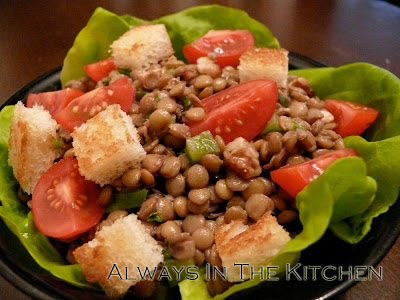
Ärtsoppa, a slow-cooked soup made of dried yellow peas, onion, and broth is one of Sweden's classic dishes whose origins reach remarkably far back, as it is claimed to have been documented as a staple from at least as early as the middle ages.
Most commonly, this thick, simple soup is associated with Thursdays, as it was historically served as a hearty bracer before Friday's fast. Even though fasting on Friday is no longer common, this traditional pea soup is often still served at Thursday supper, often in combination with thin Swedish pancakes for dessert (and sometimes with a glass of punsch liqueur). So ingrained is the idea of pea soup and pancakes on Thursdays, that many schools and restaurants serve it for Thursday lunch and even the army continues to serve it on Thursdays. This combination is not exclusive to Sweden, of course, as for example Finland also enjoys this particular duo (although I'm told that Finnish pea soup is usually made from dried green peas). Whether this is due to the complicated history between Finland and Sweden or is simply a Scandinavian favourite across the board, I'm not sure.
Ärtsoppa is available in both vegetarian and meaty versions, with the latter usually featuring either salt pork, ham hock, picnic shoulder, or sausage. I decided to use a fairly simple recipe, culled from the back of the dried pea box (Go Green brand) and various online sources, including Swedish Food and the supermarket ICA.
The traditional accompaniments to the soup itself are mustard (a slightly sweet local mustard called Johnny's is very popular for this) and crispbread. Whether you decide to go full pancake as well, is of course up to you.
Gul Ärtsoppa med Fläsk
Swedish Yellow Pea Soup with Pork
Serves 6 - 8
500 grams dried whole yellow peas, soaked in cold water overnight (or for 12 hours)
2 litres fresh water, for cooking the peas
1 medium yellow onion, diced medium
1 stalk celery, diced small
1 teaspoon dried thyme leaf (not ground)
1 teaspoon ground dried ginger
pinch ground allspice
2 bay leaves
2 tablespoons vegetable bouillon/stock concentrate
250 grams kasseler or other lean ham, diced small
In a tremendous economy of effort, add all of the ingredients except the stock concentrate and the ham in a large soup pot, bring to a boil and simmer gently for an hour. Add the stock concentrate and stir through. Using a wooden spoon or potato masher (you could also use an immersion blender, but be careful not to overdo it), crush some of the peas (30-50%, depending how thick you want the soup) and add the finely-diced ham. Simmer for another 30 minutes, or until the remaining whole peas are tender and the broth has thickened.
Serve drizzled with mustard and some crispbread on the side. For the full-on Thursday experience, follow the soup with Swedish pancakes and strawberry preserves! (Much easier to do if you already have a few pancakes leftover.)
In acknowledgement of my Canadian heritage, I note that there are strong similarities between this soup and the traditional pea soup of Québec (Soupe aux pois), with the most prominent difference being that the Québecois version usually sautés the fresh vegetables in a little fat, frequently contains carrots, and does not, as far as I know, contain ginger. I have never seen Soupe aux Pois served with mustard before either, but if anyone has, please let me know!





























